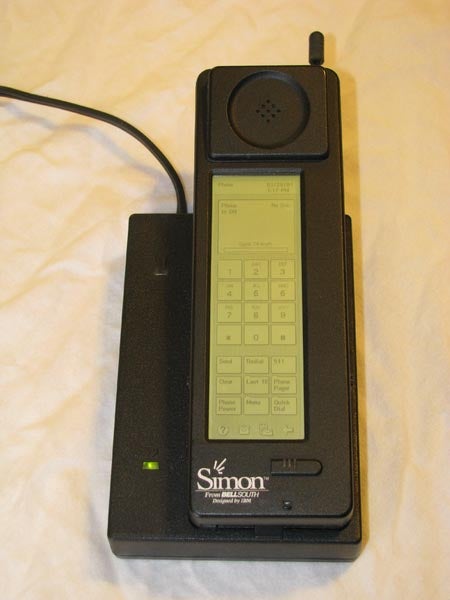Smartphone at 20: IBM Simon becomes museum exhibit
At 20 years old, IBM Simon, the first ever smartphone, will go on display at London’s Science Museum

Your support helps us to tell the story
From reproductive rights to climate change to Big Tech, The Independent is on the ground when the story is developing. Whether it's investigating the financials of Elon Musk's pro-Trump PAC or producing our latest documentary, 'The A Word', which shines a light on the American women fighting for reproductive rights, we know how important it is to parse out the facts from the messaging.
At such a critical moment in US history, we need reporters on the ground. Your donation allows us to keep sending journalists to speak to both sides of the story.
The Independent is trusted by Americans across the entire political spectrum. And unlike many other quality news outlets, we choose not to lock Americans out of our reporting and analysis with paywalls. We believe quality journalism should be available to everyone, paid for by those who can afford it.
Your support makes all the difference.You probably didn’t use it, and may not have even heard of it, but the now 20-year-old IBM Simon was the world’s first smartphone, on which you could write, draw, manage your contacts and calendar, and send faxes – it even had apps.
It was the first device to merge the mobile phone and the personal computer, and so to celebrate Simon’s 20th birthday, the London Science Museum is putting it on display in its new Information Age exhibition, alongside the inaugural BBC radio broadcast in 1922, the first digital TV and a further 800 breakthrough technologies.
It may not have looked pretty, but when it debuted on 16 August 1994, the IBM Simon heralded a new age of technology – ten years later. The Simon, which pre-dates the iPhone by 13 years, and the Blackberry by nine, was only on the market for a brief, six-month run.
It was ahead of its time. When Simon was conceived, not a single Web browser had been released.
Simon was a brick; it weighed 500g and was no way pocket-sized. It had only an hour’s battery, cost £539 and there was no mobile internet. It had a slot for cartridges that were conceived as primitive apps. It was only available in 15 states in the US market, and sold around 50,000 units.
“The Simon wasn’t called a smartphone back then,” said Charlotte Connelly, the museum’s creator. “But it had a lot of the features we see today. It had a calendar; it could take notes and send emails and messages and combined all of this with a cell phone.”
“It has all the components of a smartphone, including a slot in the bottom to insert different applications, such as mapping ones, spreadsheets and games. So it really was a forerunner to the iPhone.”
Join our commenting forum
Join thought-provoking conversations, follow other Independent readers and see their replies
Comments